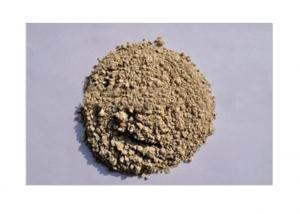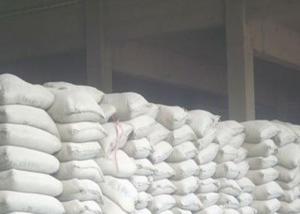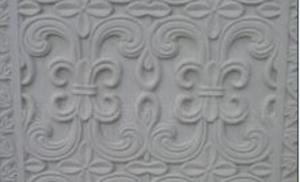Rapid-Hardening Sulphoaluminate Cement 42.5
- Loading Port:
- China Main Port
- Payment Terms:
- TT or LC
- Min Order Qty:
- 1 Tonne m.t.
- Supply Capability:
- 1000 Tonnes Per Month m.t./month
OKorder Service Pledge
OKorder Financial Service
You Might Also Like
Rapid-hardening cement 42.5 grade.
It is a kind of high early strength cement.
The product obtained by grinding cement clinker obtained by roasting suitable raw material, consisting essentially of anhydrous calcium sulphoaluminate and dicalcium silicate. Suitable gypsum and 0-10% limestone shall be blended with clinker during manufacture of rapid-hardening sulphoaluminate cement. The product is hydraulicity binding material. It has high early strength. The code no is R-SAC and with four grades.
Main Specification
1.Specific surface area(m2/kg): ≥350
2.Setting time(min):
initial setting time: ≥25
Final setting time: ≤180
(Remark: the setting time can be adjusted according to the customer’s demand.)
Strength data in different ages:
Grade | Compressive strength (Mpa) | Bending strength (Mpa) | ||||
1d | 3d | 28d | 1d | 3d | 28d | |
42.5 | 33.0 | 42.5 | 45.0 | 6.0 | 6.5 | 7.0 |
52.5 | 42.0 | 52.5 | 55.0 | 6.5 | 7.5 | 7.5 |
62.5 | 50.0 | 62.5 | 65.0 | 7.0 | 7.5 | 8.0 |
72.5 | 56.0 | 72.5 | 75.0 | 7.5 | 8.0 | 8.5 |
Properties
1) High early strength and high strength properties
Its compressive strength can reach 35-50Mpa within 1 day, 50-70Mpa after 3 days, and it also can grows continually with the increasing of curing age.
2) High froze-resistance property:
If used at the temperature as low as 0-10°C,which early strength is 5-6 times than that of OPC; if used in 0-20°C with little admixture, its strength in 3-7d can reach 70-80% of designed strength, with very little strength loss after 300 times of froze-thaw circle.
3) High impermeability: because of its dense structure, the impermeability of the concrete is 2-3 times than that of OPC in same grade.
4) Anti-carbonation property: it has good anti-carbonation property, and low dry-shrinkage.
5) Corrosion-resistance: it has good corrosion-resistance quality, especially much better in seawater corrosion resistance than that of high anti-sulphate Portland cement, with more than 1 corrosion-resistance coefficient.
Applications
1. Construction in winter.
2. Urgent repairs and rapid construction.
3. Spraying anchor and supporting engineering.
4. Water conservancy facilities and offshore projects.
5. Bridge and road construction.
6. Cement products and prefabricated components.
7. Industrial and civil engineering.
Package and storage:
bulk and weave package with membrane, 50kg per bag, conservation in cool and dry place, prevent wet.
- Q: How do u gt plastic model cement off of the windows of a plastic model?
- Glued parts can't be unglued, as the glue melts and welds the plastic together. Go slow, and be patient. Or, go with plan B of battle damage.
- Q: Has a body ever been found with cement shoes?
- The shoes themselves aren't cement. It's a coined phrase that means to put the victim's feet in a container(s) of cement and let it dry and harden. I've never heard of a case where they found this, but you sure hear a lot of this on tv...especially old-time crime dramas.
- Q: when the dentist put the crown on to check to fit, he couldnt remove it to put the cement, if he did he said it'd break.it doesnt seem loose but when i bite i canfeel something happening under the crown. and when i bite down on my tongue it causes a foul odor in my mouth. im scarred :/
- Actually I have seen such a good fit that they did not require cement before. I have placed and fitted thousands of permanent crowns to prepare the crown to be ready before the dentist comes in and permanently cements it. When the crown is on it should snap into place without being too loose or too tight. The floss on both sides of the tooth should also go between the tooth without too much space or too tight to place the floss and without shredding the floss. Since your having issues I would have them take the chance of removing it with it breaking, it may or may not. If it breaks they need to re send the impression to lab and have them make a new temporary crown. @michelle I understand going by the book, I was saying I have seen a person who had a crown on without cement from another office and when it was removed (with a handpiece) there was no decay under it. Sometimes the crown prepped tooth is so fragile and small that the trauma from removing it can also break the tooth.
- Q: I carved S in wet cement but it wasn't my sidewalk... will I get in trouble?? I feel really guilty but I just wanted to make a memory :(
- It actually does qualify as vandalism and damage to public property if it's a public sidewalk, damage to private property if it's someone's walk (unless of course, it's yours). They can't charge you with anything if they don't know you did it. On the other hand, it's not the worst thing in the world. I crossover a patch of cement in my travels that says lily grace and I happen to know a little girl named Lily Grace in that neighborhood <wink> But technically, for the stern no-fun grownups- it's not supposed to happen. We won't tell!
- Q: I have a 27 tv and bought a wall mount sufficient enough to support it except the wall is cement or concrete if there is a difference and there are no studs along the wall. Can I just use cement screws and what are they?
- Is the wall cement (solid) or cement block? If it's cement block, the blocks have hollow spaces so you have to drill them with a masonry bit and use toggle bolts. It the wall is solid cement, you can use any number of concrete anchors available at hardware and home improvement stores. BTW, the difference between cement and concrete is that concrete contains aggregate (like gravel) and concrete does not.
- Q: my dad took the vinyl tile off our garageand he wants to spread cement over the garage floorwhat type of cement would stick to the floor as well as tile glue so the cement would stck forever
- You should really try to get that glue up. The problem is going to be if it's like a mastic (soft and sticky) because that going to take a chemical stripper like Xylene or at least lacquer thinner. Go airflow and at least a half mask with chemical cartridges are necessary. A full mask and personal air supply is really a much better way to go. What ever you put down over that tile adhesive is only going to be as good as that tile adhesive. If you try to put down something hard and brittle like a thin layered cement (Sakrete's Top Bond) now you have something brittle over something soft what do you think is going to happen? You could try putting something soft over it like a urethane rubber but again if the old adhesive fails you spent a lot of time money on Urethane. If the heavy adhesive is off you can try renting a diamond grinder but you have to be careful these are not toys and you can do more damage than good if you don't think you can run it properly... Your cheapest way out may be to just put more tile down. If you like send my some pictures of the floor and I'll try to help... This is my profession.
- Q: i was told not to use anything that would seal the cement, and that the object needs to breath.
- As a rule, sealing cement as with other porous materials is generally a good idea. The reason being is that should moisture absorb into the cement with a nice coat of paint, the first thing to happen is that the paint can pop off. In chunks if it's oil or thin flakes in latex. Either way I would suggest painting with any finish you like and use coat of xterior primer as well. Otherwise, your turtle will continue to drink all the paint you could put on it.
- Q: given only the volume of the project...
- There are a couple of rules of thumb for determining quantities required for a project. The old rule is a ratio of 1:3:4 Cement to Fine Aggregate (sand) to Coarse Aggregate. But this describes the mix proportions and since the cement and fine aggregate will disappear into the voids in the coarse aggregate another ratio is recommended. A common approach is by the bag mix ratio. A 6 or 7 bag mix will be quoted. These are ratios of numbers of regular bags of cement per cubic yard of mix. A 6 bag mix will normally require 6 bags of cement 15 cubic feet of fine aggregate and 20 cubic feet of coarse aggregate. A 7 bag mix will require 15 cubic feet of fine and 21 cubic feet of coarse aggregate. Why don't they add up to 27? Welcome to the wonderful world of concrete.
- Q: I want to open building materials store main cement: tiles and the like. How much money to invest in the root. Store area of more than 100 square feet
- Oh! Open building materials shop ah! Professional guidance with you. Taobao check days Yao ceramic tiles glue, customer service will guide you
- Q: I just finished a craft project and I'm now left with 45lbs of quick drying cement. Any ideas?
- Get a bit of it, shape it into a step, and press decor into it? Sorry, never used cement before!
1. Manufacturer Overview
| Location | Hebei,China (Mainland) |
| Year Established | 1998 |
| Annual Output Value | US$2.5 Million - US$5 Million |
| Main Markets | North America; South America; Eastern Europe; Southeast Asia; Africa; Mid East; Eastern Asia; Western Europe; Southern Europe; South Asia |
| Company Certifications | ISO 9001:2000;ISO 14001:2004 |
2. Manufacturer Certificates
| a) Certification Name | |
| Range | |
| Reference | |
| Validity Period |
3. Manufacturer Capability
| a) Trade Capacity | |
| Nearest Port | Xingang, Jingtang |
| Export Percentage | 21% - 30% |
| No.of Employees in Trade Department | 11-20 People |
| Language Spoken: | English, Chinese, Japanese, Russian, Korean |
| b) Factory Information | |
| Factory Size: | 1,000-3,000 square meters |
| No. of Production Lines | |
| Contract Manufacturing | OEM Service Offered Buyer Label Offered |
| Product Price Range | Average |
Send your message to us
Rapid-Hardening Sulphoaluminate Cement 42.5
- Loading Port:
- China Main Port
- Payment Terms:
- TT or LC
- Min Order Qty:
- 1 Tonne m.t.
- Supply Capability:
- 1000 Tonnes Per Month m.t./month
OKorder Service Pledge
OKorder Financial Service
Similar products
Hot products
Hot Searches
Related keywords























